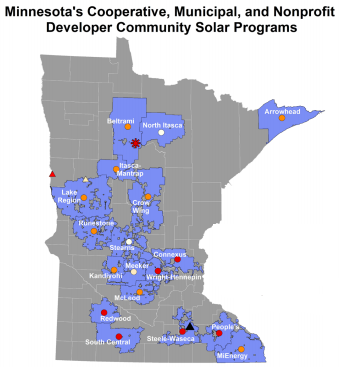Municipal and Cooperative Utilities
Municipal utilities and rural electric cooperatives provide over one-quarter of the electricity in the U.S. but relatively little academic research has been dedicated to understanding how these organizations work. With the emergence of distributed energy technologies, like rooftop solar and home batteries, these utilities are confronting new opportunities and challenges. We're studying how these utilities are implementing new practice innovations that reflect their unique identity as locally independent, customer-responsive utilities with critical institutional relationships with electricity generation utilities.
REPORT and issue brief
Barriers and opportunities for distributed energy resources in minnesota’s municipal utilities and electric cooperatives
This report summarizes our findings from a two-year research project to investigate the landscape of Minnesota’s municipal utilities and rural electric cooperatives. Our focus is on how these utilities are confronting new challenges and opportunities emerging from smaller-scale, often-more sustainable distributed energy resources, such as rooftop solar, community shared solar, LED light bulbs, controllable water heaters, and electric vehicles.
ISSUE BRIEF
COMMUNITY SHARED SOLAR IN MINNESOTA: LEARNING FROM THE FIRST 300 MEGAWATTS
REPORT
COMMUNITY SHARED SOLAR IN MINNESOTA: LEARNING FROM THE FIRST 300 MEGAWATTS
Community shared solar (CSS) is an emerging approach to
deploying solar energy that seeks to expand the market for solar to electricity customers who do not necessarily have appropriate roof space or access to capital. CSS allows customers to own, finance, or lease a share of an offsite, centralized solar facility.
As of March 2018, Minnesota has 33 utility- or developer-led CSS programs, totaling over 300 MW, making it the state with the most CSS in the country.

